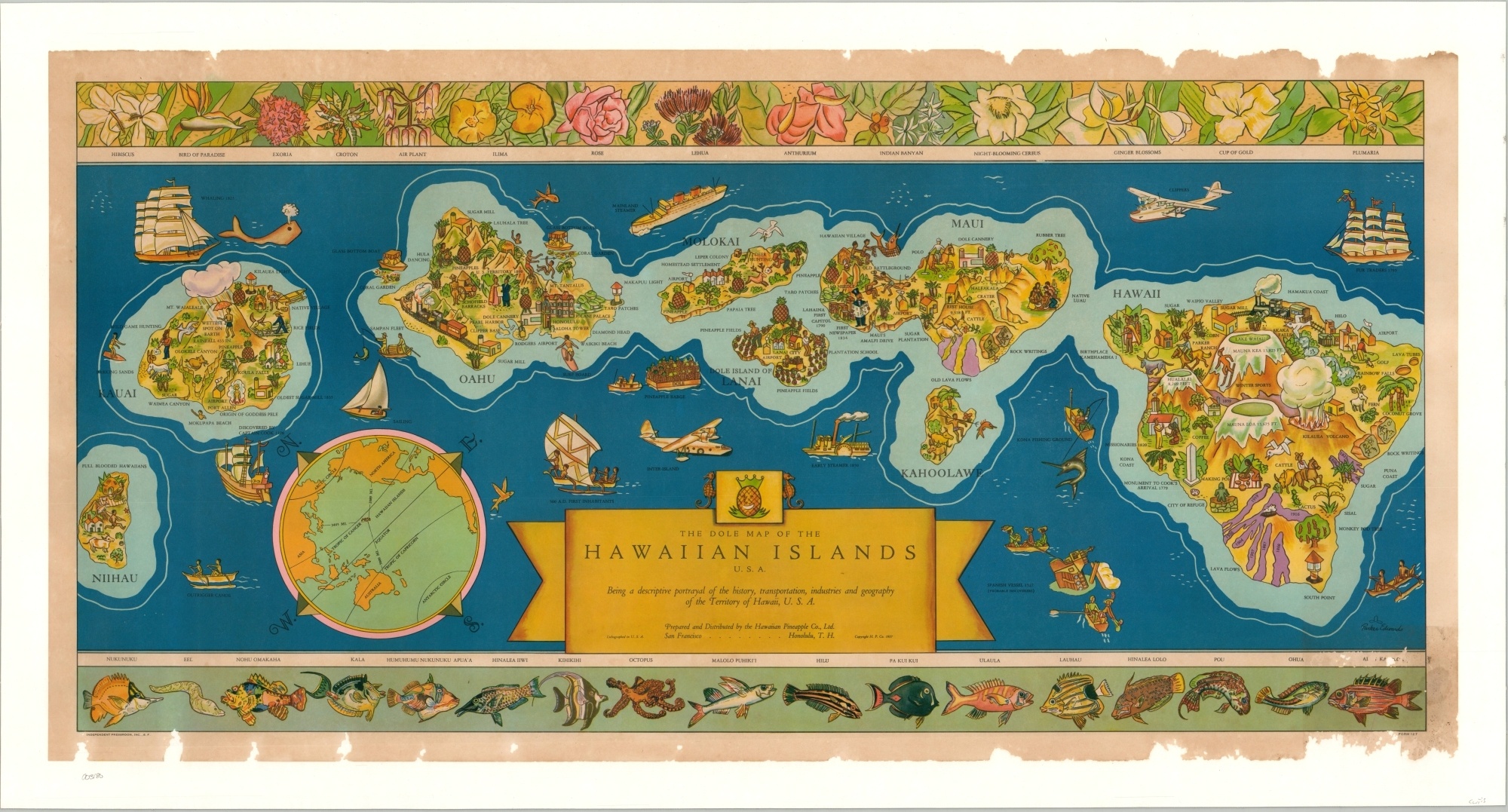The Dole Map of the Hawaiian Islands
“The commodification of Hawaiian culture”, over two decades before statehood.
Out of stock
Description
In January of 1893, an unlawful coup d’et tat, supported by business interests and military troops of the United States, took place against Queen Liliuokalani of the Hawaiian Islands. Shortly thereafter President Grover Cleveland’s stated “substantial wrong has thus been done which a due regard for our national character as well as the rights of the injured people requires we should endeavor to repair the monarchy”.
Despite this assurance, economic and strategic interests were paramount, and a heavily biased Committee of Safety declared Sanford Dole to be the provisional president. He won the election the following year and would serve in that role until Hawaii was officially annexed in 1898. This was quite convenient for his cousin, James Dole, who arrived at the island the following year with an eye on the export market, now that agricultural products were no longer subject to U.S. tariffs.
According to a condemnatory article by Mallory Huard;
“When James Dole arrived on the island of Oahu in 1899 with dreams making fortunes in the emerging fruit business, he did so in the wake of the destruction of the Hawaiian monarchy, the massive depopulation of the Native Hawaiians, and in the tradition of western industries extracting profit from Hawaiian soil and people. James Dole believed that the success of the business and industry depended upon product visibility, and that marketing pineapple required the commodification of Hawaiian culture. Hawaiian Nationalist activists Mililani and Haunani-Kay Trask explain that this includes “marketing native values and practices on haole terms.
These talents, in Hawaiian terms, are the hula, the aloha—generosity and love—of our people, the u’i or youthful beauty of our men and women, and the continuing allure of our lands and waters.” These very images feature prominently in Hawaiian Pineapple Company and Dole Company’s advertisements. By selling the pineapple as distinctly Hawaiian, “a label assumed by white usurpers of the kingdom for legitimacy,” professor Gary Okihiro explains, “the pineapple tendered the comforts of sun-kissed lands, soft ocean breezes, nature’s abundance, sensuality, and the sweet scent of paradise.”
Early advertisements from the Hawaiian Pineapple Company in the 1910s and 1920s featured images of the fruit itself, emphasizing its ripeness and its exotic and other-worldly flavors by asking, “But have you tasted this most delicious fruit?” before proclaiming “It’s so different.” These same advertisements frequently emphasized domesticity, with scenes of mothers and children at the dinner table, and increasingly emphasized the palm trees and cliffs of the Hawaiian landscape, before eventually coopting Hawaiian bodies themselves. By the 1930s, Native Hawaiian people were depicted not only as harvesters of the product, but as part of the product itself, their bodies used to lend a certain authenticity to the fruit.”
This map, prepared and distributed by the Hawaiian Pineapple Company, Ltd. in 1937 certainly seems to follow the suggested pattern described in Mallory’s article above. All eight islands are depicted in a pictorial style slightly exotic to a Western audience. Pineapples can be found on five of the eight islands, but ‘Full Blooded Hawaiians’ on only one (Niihau).
Elsewhere the indigenous population is confined to Native Villages, hula dancing, and other largely mundane or stereotypical activities. Recreational activities and modern conveniences juxtapose with exotic sights and tropical flora and fauna to present an idyllic paradise, even going so far as to use the Hawai’ian names for local fish species.
Map Details
Publication Date: 1937
Author: Parker Edwards
Sheet Width (in): 37
Sheet Height (in): 18.75
Condition: B
Condition Description: Professionally cleaned and mounted on linen for preservation and stability. Numerous spots of paper loss in the upper and lower margins, with moderate soiling, abrasion, and a bit of text loss in the lower right. Otherwise remains an intact image with vibrant color.
Out of stock

